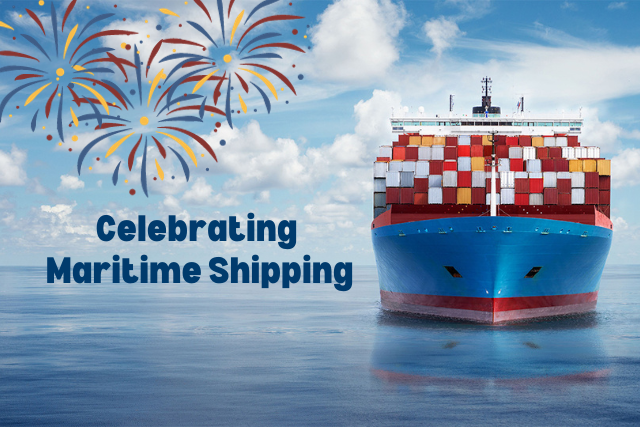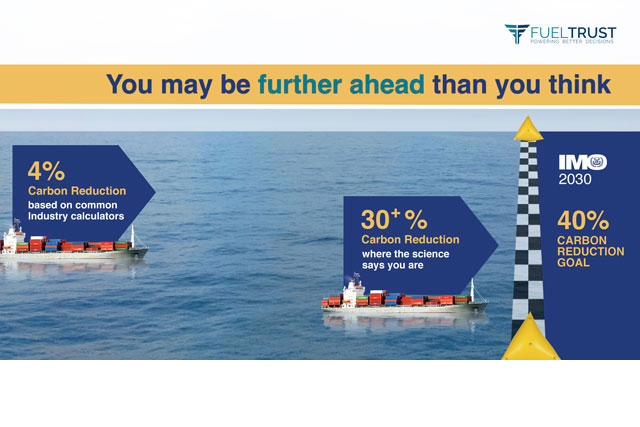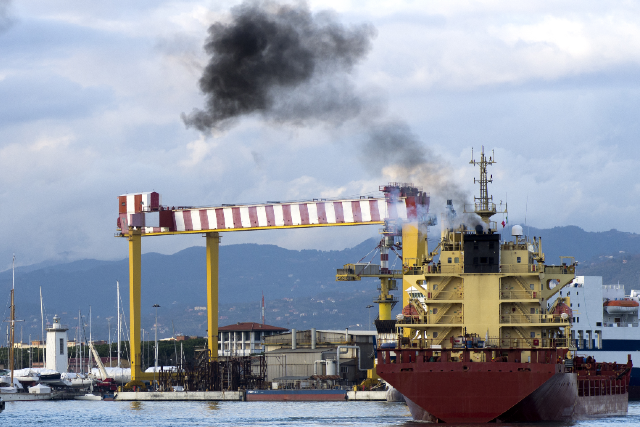Hot air about hot air?
Governments came together this fall at COP 26 to discuss the need for climate change. There was progress in some areas, disappointments in others, lots of pledges made and agreement to continue the efforts at COP 27 next year.
There were also loud calls to rapidly eliminate GHG emissions from shipping completely. Fourteen countries, including the US, backed a call to reduce shipping emissions to zero by 2050, and agreed to work through the IMO to set decennial goals for carbon emissions up to the middle of the century. “We urge the IMO to take action to set ambitious targets to achieve zero emission shipping by 2050,” Danish prime minister Mette Frederiksen told reporters at COP 26. “Carbon-neutral shipping is vital to reaching our climate goals.”
However, at MEPC 77 just three weeks later, countries failed to agree on steps to cut carbon in the shipping industry, and the International Chamber of Shipping expressed its disappointment, saying it was “almost as if COP 26 never happened.”
The industry challenge
Currently, the industry is struggling to comprehend the scale of the emissions problem at the vessel level, where there is too much information, and not enough data. A generalized approach to carbon regulation – which assigns emissions contributions to vessels based on specifications, bench testing and the classifications of the equipment they have on board – only delivers general estimates of a vessel’s emissions.
Once the vessel is fueled and the engine starts turning, these estimates of carbon emissions are inaccurate, as they fail to take account of key factors affecting the makeup of the fuel a vessel burns and therefore its emissions. Estimates do not allow for the specific environmental conditions the vessel is operating in, or the environmental conditions prevailing on board.
While based only on bench testing and class approval, the generalizations take little to no account of an engine’s history, and what impact that has on its ability to burn fuel effectively and efficiently. The characteristics of the particular fuel batch, such as energy density, flash point, and chemical mixtures, also vary and have an impact on emissions levels.
In short, the industry has no accurate measure of the greenhouse gases it emits on a vessel-by-vessel and voyage-by-voyage basis. This lack of accuracy means vessel owners may be paying financial penalties for emissions at volumes that bear no relation to what the vessel actually emits. This lack of accuracy and transparency risks undermining the industry’s support for decarbonization, just as it is trying to make difficult decisions about where to invest to cut carbon.
The difference is data
What the industry needs is accurate vessel-by-vessel, voyage-by-voyage understanding of carbon emissions. FuelTrust is a technology company that works in the fuel supply chain helping to establish transparency between counterparties to fuel transactions. By tracking and maintaining a record of how batches of fuel are traded, blended, stored and consumed across their life-cycle – from well to wake – suppliers and buyers can be reassured about the fuel they trade and use.
Using the data we collect for our clients, analysis has shown that not all fuels are blended equal. Even fuel from the same batch can have differences in energy density or carbon emissions when burnt in the different vessels.
Our technology detects differences between batches of fuels, allowing shipowners and suppliers to benefit from quality and emissions advantages that would otherwise go undetected. Suppliers can reliably differentiate and “de-commoditize” their products, even in highly competitive or untrusted markets.
FuelTrust’s use of technology covers the digitalization of transactions, using electronic bunker delivery notices (eBDN™) to track the custody of fuel; blockchain technology to create an indisputable and unalterable record of those transactions; and AI technology to trace fuel through the supply chain from its source to combustion and emissions. In doing so, we provide vessel owners and fuel suppliers with a single source of truth about where fuel has come from, where it has gone, and how it has been used.
What this means for the future
Fuel quality and quantity issues are perpetual in the shipping industry, and new low and zero carbon fuels entering the market are creating even more challenges. New pressure from outside the industry will drive the need for vessels to demonstrate that they are delivering against decarbonization targets. Owners and charterers will need to demonstrate compliance with emissions regulations and support their shippers’ ESG reporting.
Our ability to leverage industry standard transaction data to analyze different batches of fuels means we can provide accurate emissions estimates for historical benchmarks for owners and give fuel suppliers better visibility over fuel quality. On an industry-wide basis, this baseline of emissions performance, created by our digital technology using historic transaction, vessel log and fuel data, can be used to accurately, reliably, and fairly measure GHG emissions by a vessel. For the industry and its regulators, this will make it simpler, easier, and fairer to calculate fines, levies or taxes on polluters in the shipping industry, while creating opportunity to reap benefits for cutting emissions.
In short, a newer, more reliable method for accountability will help the industry break the deadlock which persists in climate talks between countries with different priorities and vast amounts of information to hide behind. The technology to help us accurately account for carbon emissions is here, giving our industry an opportunity to measure progress towards decarbonization using science to validate progress and avoid non-beneficial costs. The industry should seize this opportunity for a clear-sighted view of the challenge it faces to move past the discussion and disagreement toward meaningful, responsible, and beneficial actions.







